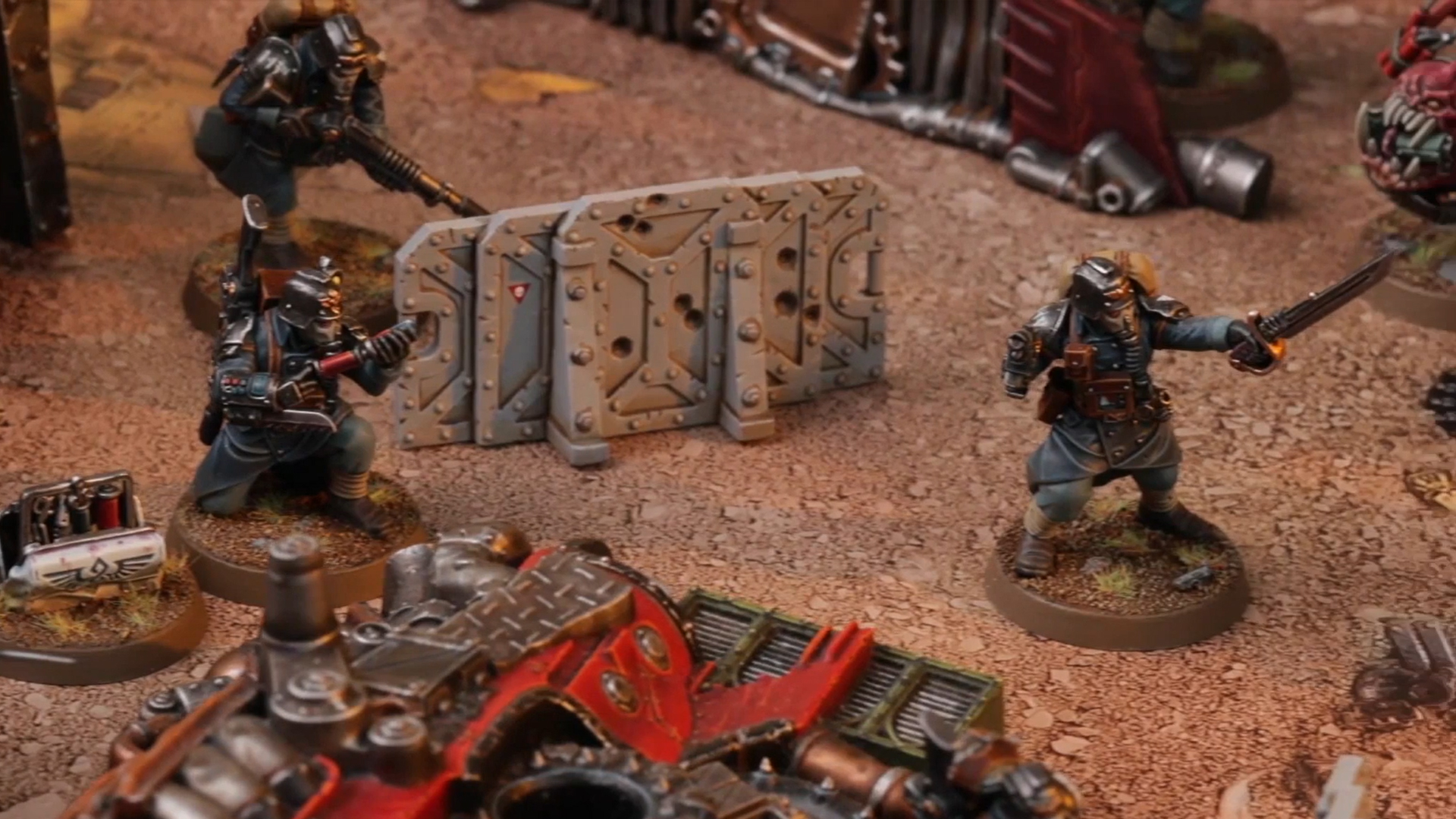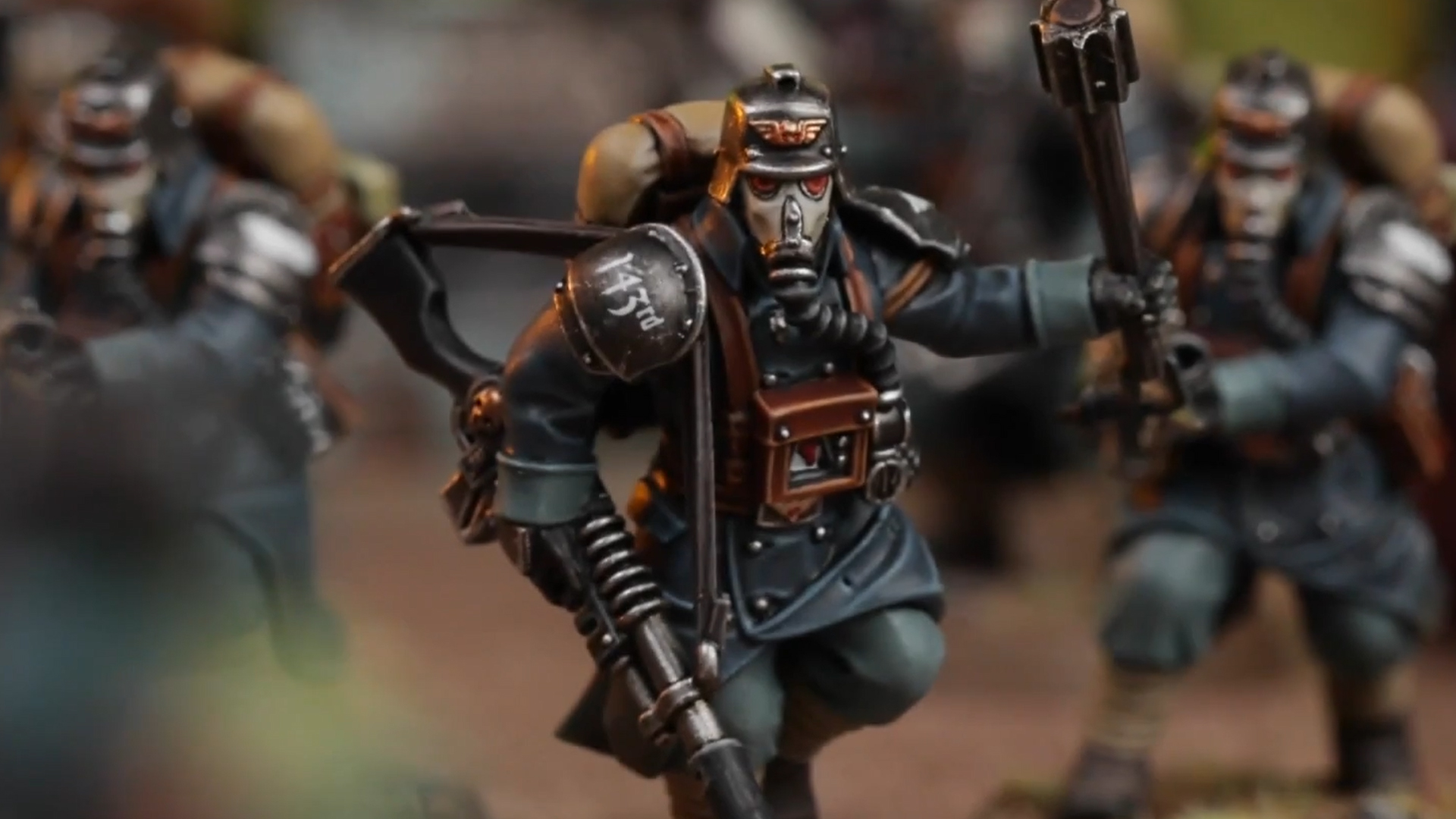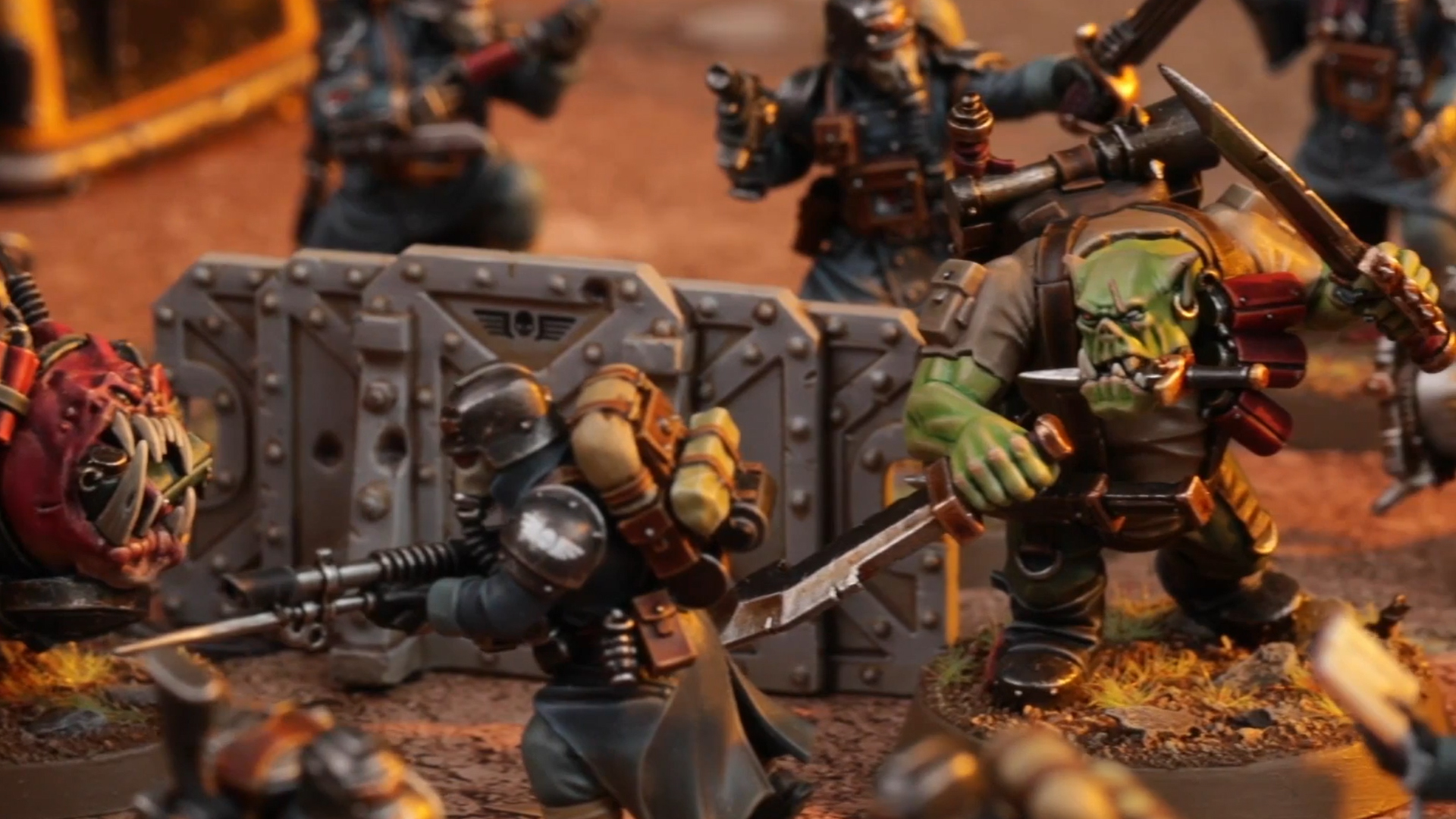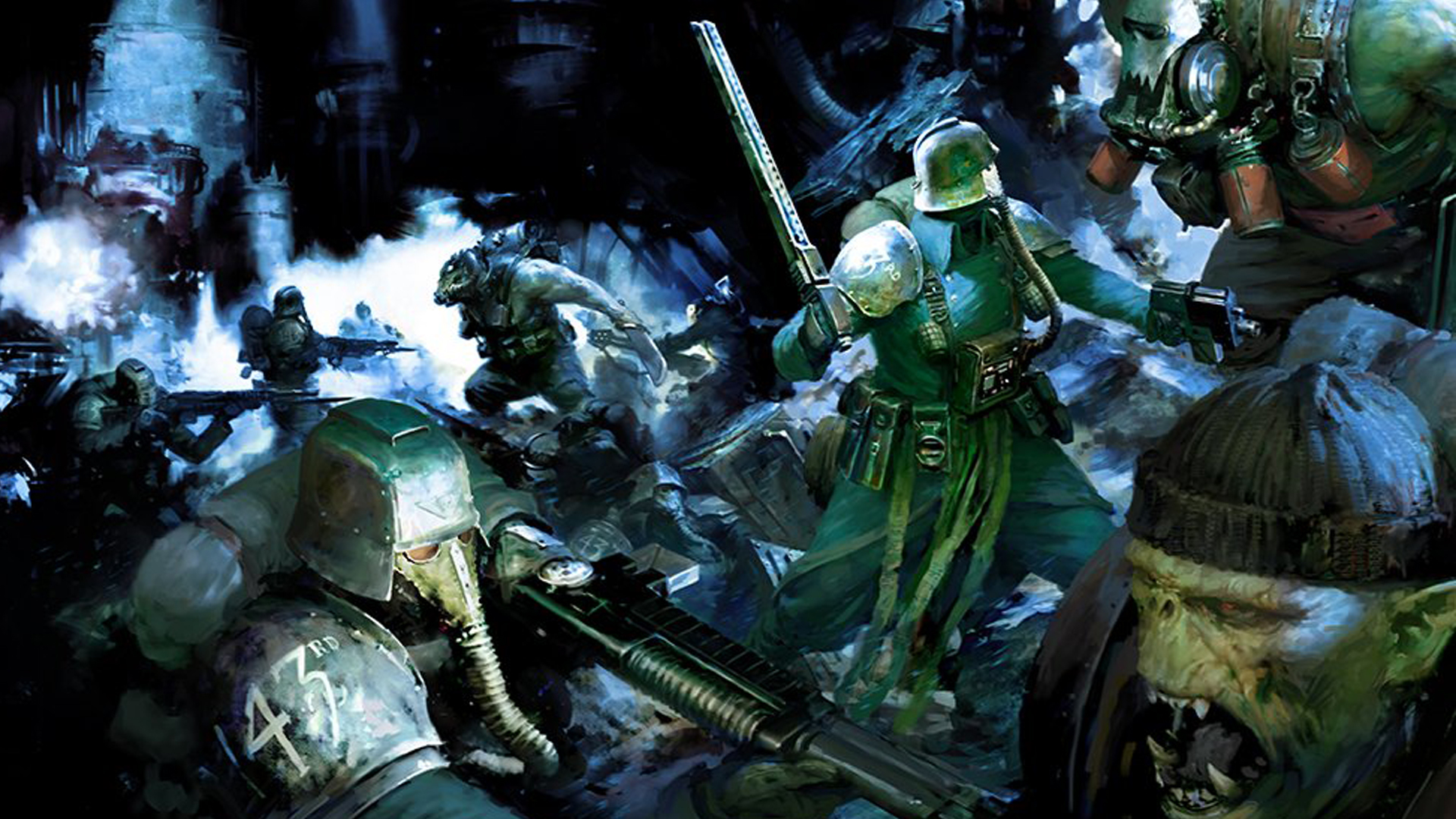GamesRadar+ Verdict
The Kill Team Starter Set shows off what makes this skirmish wargame special, but it leaves something to be desired if you're a beginner.
Pros
- +
A fully-fledged and demanding tactical game distinct from 40K
- +
Orders system is both thematic and strategically interesting
- +
Starter Set is great value for money
Cons
- -
Recruit rules are confusing and contradictory
- -
Initially confusing complexity and variety of options
Why you can trust GamesRadar+
The Kill Team Starter Set is designed to be a lifeline. For what feels like 40,000 years, Warhammer 40K has been a staple of gaming life. But if the grimdark setting and superb miniature sculpts appealed to you, the only way into its tabletop world was the full game. That meant a lot of miniatures, a lot of time, and a lot of money. So back in 2013, Games Workshop introduced Kill Team, a version of the rules suitable for small skirmishes of a dozen or so models per side.
All the early iterations of this game used a rule set that was close to that of the original Warhammer 40K, which both held the game back and limited its value as an introductory title. Now the publisher has returned with an all-new Kill Team Starter Set featuring all-new mechanics and all-new miniatures.
There are various boxes you can start with, but we settled for this version which sees the Veteran Guardsmen of Krieg squaring up to the vicious Ork Kommandos. Does it do its job as a good entry point to Kill Team? Or is it a casualty of war?
What is it, and how does it work?

- Game type: Skirmish wargame
- Players: 2
- Difficulty: Moderate
- Lasts: 30+ mins
- Ages: 12+
- Price: $95 / £65
- Play if you enjoy: Warhammer 40K, Warcry: Red Harvest, Godtear, The Elder Scrolls: Call to Arms
Players in the Kill Team Starter Set take control of a small band of sci-fi warriors and fight it out over four turns, or “turning points”, in a bid to control certain objectives dictated by the scenario. Most of the models in your team will likely have a unique stat line, weapon loadout, and special abilities, which can be quite a bit to keep track of as the action unfolds.
Models can be issued with one of two orders at the start of a turn. The 'Engage' order allows them to move and shoot as normal. A 'Conceal' order, by contrast, means they can’t attack, but if they end their move close to some scenery, they can’t be shot at in turn (unless the gunner has height elevation over the target). This is a genius-level piece of design. At a stroke, it gives players a slew of tactical decisions to work with while making it simple to sneak through the scenery and take on the enemy or claim objectives at close quarters. Although it should be noted that none of the included terrain in this set offers the chance to gain elevation.
Ranges for movement and shooting are, for some weird reason, represented by shapes that correspond to particular distances. You’ll soon learn to treat a circle as two inches, but the real virtue of this baffling choice is that it helps break model movement down into increments. A three-circle move stat means you can make three straight-line moves of two inches each. This is another superb mechanic, making it easy to manoeuvre around obstacles without worrying about using string or suchlike to measure the movement curves.

When it comes to combat there are the usual fistfuls of dice to roll, looking for hit numbers, versus a defence roll looking for armour save numbers for the target model. Lots of different weapons influence this in one way or another with a confusing range of keywords. A melta, for example, has “AP” which reduces the defence dice of the target and “MW” which gives it extra lethal critical hits. It’s a lot to take in, but it does introduce a lot of rock-paper-scissors style strategy into choosing targets.
If you can charge into close combat then there’s a slightly different resolution where the defender can choose to use their success results to parry the attacker or inflict wounds on them. Since you’ll know as soon as the dice land whether you can parry enough to stay alive, the choice is easy, but this rule is still very worthwhile. It makes close combat very deadly, very fast, especially when you factor in the fact that nearby models can support in melee for a dice bonus. If you charge and don’t kill your target, you could be in a world of pain.
Gameplay - is it any good?
This Kill Team Starter Set comes with a copy of the full rules which is helpfully shrunk down to reference size, a handy aid you can’t get elsewhere. However, if you’re new to the game, you’re supposed to start with the Recruit Edition booklet which teaches you the ropes over four scenarios of increasing complexity. Kill Team is a fairly detailed game, but the Recruit rules are of questionable value because they go over the options in such laborious detail that they make many of the rules feel harder to understand than they actually are.
Most of the models in the set can be assembled in different ways, but with a limited number of parts, some choices exclude others. In a truly head-scratching piece of design, the first scenario instructs you to build one model, a Veteran Guardsman Melta, that leaves you unable to build two models required for later scenarios. The only options are to proxy, convert your models, or buy a second box of Guardsmen. None of these is a good choice for someone fresh to the game, and the problem isn’t even mentioned in the rules.
Kill Team is a great system that conjures a real sense of tight, tactical decision-making for your tabletop
That’s a shame, because when the game does begin to come together for you, you’ll find that it’s very good indeed. Scenario four introduces the notion of objectives, which is where things really start rolling. Conceal or engage isn’t much of a choice when you’re only seeking to kill enemy models. But when you’ve got specific terrain points to claim and keep in order to win, the decision to reduce your firepower in return for the chance to sneak your way closer to those critical choke points becomes far more interesting.
Once that’s understood, the game really begins to blossom. You start to think about how to thread a path through cover to get where you need to go, and what models are best to use as covering fire. And that leads to a constant buzz of manoeuvre as you seek to improve your odds by making advantageous trade-offs. The Orks are tough, and better in close combat, but the Guardsmen, while squishy, have access to a terrifying range of heavy weapons. What can they do to stay in cover while holding the Orks at a distance so they can bring that firepower to bear?

However, after the four Recruit scenarios, the Starter Set leaves you with another problem. It includes a dinky and convenient booklet of the full rules which isn’t available anywhere else, and that has some more scenarios to play. If you do so, you’ll find the Orks have a significant advantage. And that’s because the Starter Set doesn’t include rules for team building, under which the Guardsmen get significant extra bonuses called Ancillary Support. To find out about this you’ll need another manual, Octarius, that must be bought separately.
On the flip-side though, playing the full rules adds even more fun to the mix in the form of tactical objectives. These are special missions for bonus points, such as assassinating the enemy commander, that you choose in secret before play begins. They bring a whole new level of tactics to play, giving you even more variables to juggle with as you also try to second-guess what the enemy has chosen and seek to deny them.
Overall - should you buy the Kill Team Starter Set?
Kill Team is a great system that conjures a real sense of tight, tactical decision-making for your tabletop. It’s not simple though, no ramp-up to 40K, but rather a fully-featured game in its own right that you’ll need to dedicate a lot of time to. Indeed, Kill Team is arguably the most strategic and least random of all Games Workshop titles.
That said, this Starter Set, while good value for money, is not an ideal place to start. There are too many contradictions and omissions to make it a valid pathway to new players. Better off popping into your local store and arranging a game against the staff then, if you like it, sinking the whole hog into the Octarius boxed set.
More info
| Genre | Wargame |
Matt is a freelance writer specialising in board games and tabletop. With over a decade of reviews under his belt, he has racked up credits including IGN, Dicebreaker, T3, and The Guardian.




